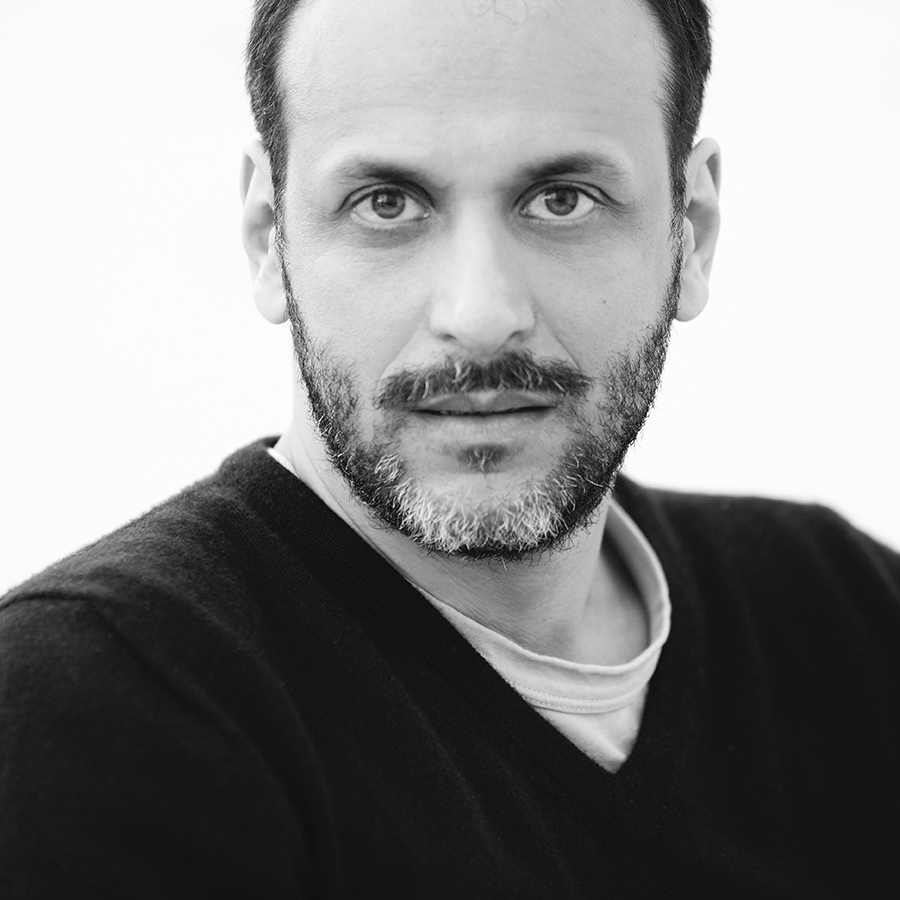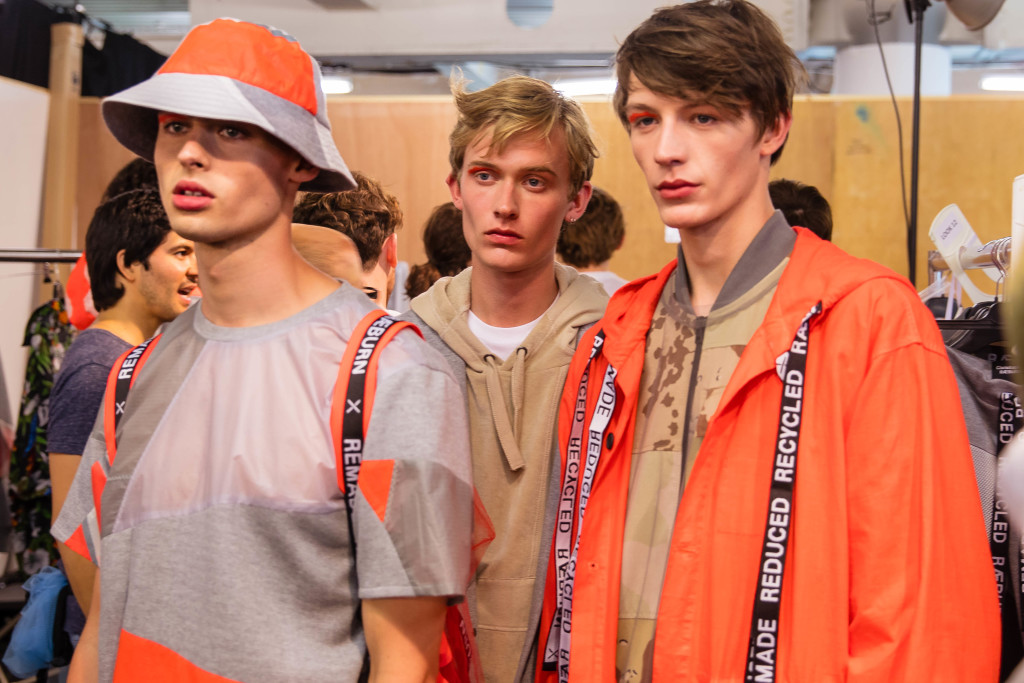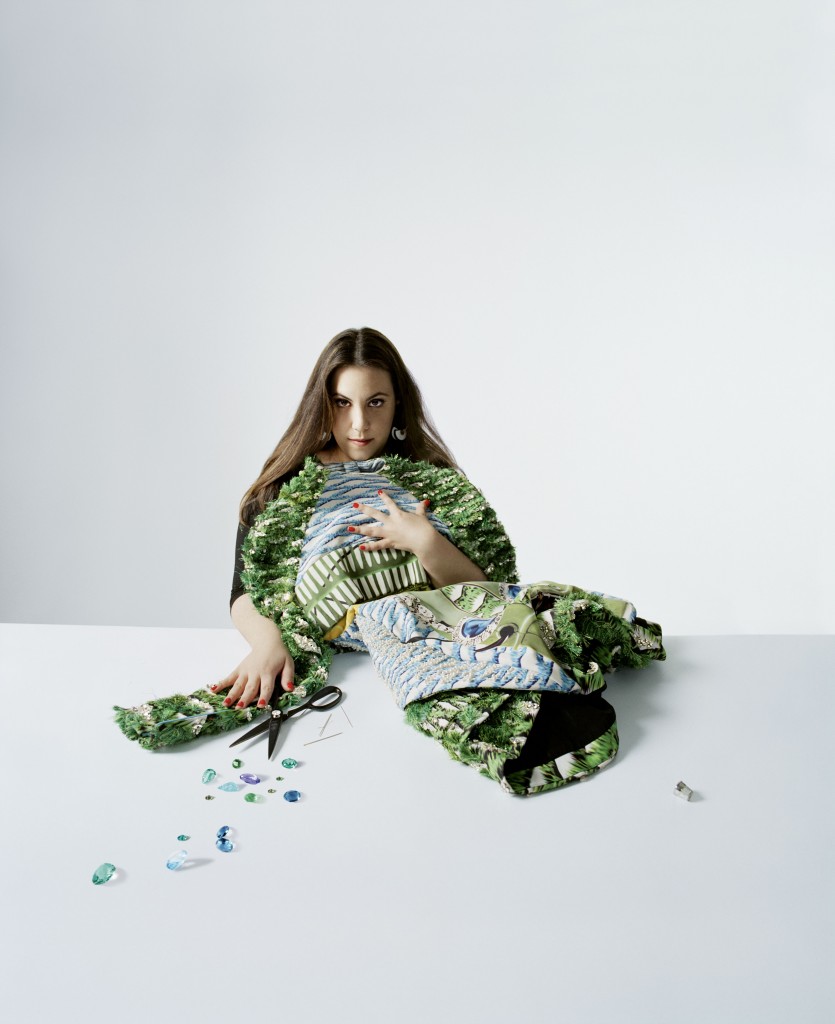
LUCA GUADAGNINO ON INSPIRATION
By Crash redaction
On the occasion of the film release of A Bigger Splash starring Tilda Swinton, Crash proposes you a recent Luca Guadagnino interview on cinema and inspiration. Tilda Swinton plays the rock star Marianne Lane, wandering along the pathways of the beautiful sicilian island Pantelleria, whose wardrobe is composed of unique custom-made pieces by Christian Dior or selected from the Maison’s ready to wear and haute couture collections. A Bigger Splash is currently in cinemas.
Interview by Armelle Leturcq
From Fellini to Rossellini to Bertolucci, there are few countries in the world that can boast as strong a talent for cinema as Italy. But that doesn’t frighten Guadagnino, who takes it as a life principle to make his own films, without trying to replicate what once was. Best known for his film I am Love (2010), starring his muse and “partner in crime” Tilda Swinton, the italian director turned his gaze to France for his latest feature film A Bigger Splash, which offers a new take on Jacques Deray’s 1969 classic, La Piscine. A lover of fashion with a highly visual imagination, Luca Guadagnino frequently rubs elbows with the likes of Silvia Venturini Fendi, Raf Simons and, most recently, Dior. An inspired and talented filmmaker who still has a few surprises in store for us…
How did you get started in cinema?
I think cinema has always been with me. In a way, there was no other path for me to follow since I knew that this idea of a big screen giving you image after image was something that made me as a person. ever since I saw Lawrence of Arabia when I was a little kid with my mother. Of course, I didn’t understand anything about the film at the time, but the actual power of those images and the strangeness of the screening – showing a big version of reality – was really appealing to me. So I always believed I wanted to become a film director. How did I start? I would say it was at the age of eight that I began to make my own super 8 films. They were a way for me to understand what it meant to have a camera. Then I kept working independently with the means I could achieve. I did a lot of little documentaries about what was around me when I was living in Palermo.
Were you born in Palermo?
Yes. When I was one month old I moved to Ethiopia, where I lived for six years. Then I moved back to Palermo for fifteen years. I then directed movies here and there and finally ended up living in milan. It became a job by being my own life, my passion. I started earning my living by doing movies only fifteen years after I started directing, and I still feel very privileged for getting paid for something that is not work for me, but more an expressive necessity of mine.
Your work has a strong connection to fashion. How did this connection happen?
That connection is more recent. There were things that influenced me when I was really young. I’ve always been drawn into what is in the shape of things. I remember looking at my mother’s bags, or the silhouettes of a character played by Bette Davis, or the way things changed between the 70s and the 80s in people’s silhouettes. I developed an interest in fashion’s capacity to speak the language of the future. In 2005, I met the great Silvia Venturini Fendi, who I reckon as a great influence in my personal understanding of fashion. She was designing a menswear collection for Fendi, apart from her accessories and bags – and I must say, she is doing such a great job! – and apart from the legacy of Fendi itself. She asked me what I thought about making a short film to go with her collection. It was ten years ago, when there was no concept such as fashion films. but she already saw it coming because she has a very clever understanding of what is going to happen. We presented the films in the showroom on a big screen. after that, I became more and more passionate about this. I met Raf Simons through Jil Sander when he created his first collection for the house. I had the privilege to be invited to the show. I already knew Raf Simons did menswear for his eponymous line, and I was very interested by the way he was approaching the youth movement with his brand, like the new punk movement. This was really striking to me. for someone that has such a grip on reality to make fashion for women that was more about dressing privileged, powerful women at the time – a post-80s, powerful woman who runs a business with this very german, dry, efficient way of dressing, mocking the men’s silhouette – Raf took it and turned it upside-down. He understood not just the concept of powerful women, but the power of women in general. He then went on to create great collections until the last beautiful 50s-influenced, egg-shaped collection, which was fabulous.
Was your film I am Love produced by Fendi?
I produced the film with other people, among which there was Silvia. but she didn’t help produce the film as Silvia representing Fendi; she did it as herself.
Raf Simons created the fashion for the film.
I don’t think the film is about fashion. you know, I’ve always admired the great films in the 50s where you had such great collaborations around costumes. For instance, Hubert de Givenchy who collaborated with Audrey Hepburn through many films. There was also Yves Saint Laurent and Louis Buñuel. I think what I wanted to do was to revamp this great concept of inviting artists to collaborate, in general, and specifically on costumes. We had to think about who is this woman, the main character played by Tilda Swinton, who comes from a high-end family but does not belong because she’s from a foreign country. The question is: how does she disguise herself in that class? Because of that work that Raf was doing on the concept of the powerful woman, I immediately thought of him to collaborate. we imagined together the identity of Emma Recchi, Tilda’s character, but it wasn’t about fashion. Fendi created the entire wardrobe of the rich men in the movie. every single man wore bespoke tailored clothes in order to give the impression of stability and immutability. I think a jacket can play that visual metaphor.
It is quite rare today to see such attention paid to the image in film. The aesthetic of your films is very precise, like the Italian films of the 60s.
Thank you very much; this is a great compliment for me. You know, the devil is in the details. so you have to challenge the devil. i think my work is to ask questions about what i’m doing through the collaborations, and to slowly and patiently try to find the answers in order to find more questions to explore. it is about different layers you have to put together in order to create life. Make a picture of reality that is a movie. So for me there is no other way than being completely detail-oriented.
The notion of beauty also seems to be quite central.
I think the notion of beauty has been overrated in the last few years, unfortunately. It almost makes me dizzy. Sometimes I fear the concept of beauty is the way to go into a generic aesthetic that is just something about a glossy surface. In the case of I Am love, we were talking about a group of people who represented money, wealth, power, and denial. we had to deal with a sense of harmony, of artificial control of space and environment. We didn’t want to be judging those people. Of course the clothes are beautiful, but at the end of the day I like the concept that a movie attempts to show what is behind this beauty. not only the great beauty, which is a concept I despise.
Does it mean that your next movie is going to be a totally different aesthetic?
Well, it’s a different environment, a different group of people. It is about what is behind the concept of being completely free. In I Am love, the characters were completely caged in. But the story takes place in a beautiful setting. Frankly, I don’t know how to put my aesthetic into words because I don’t think like that. In a way, I’m a visual artist. I think cinema changed in the last 25 years in a way that there was an increase of filming dialogue. You don’t have the sense of space anymore. I always feel the need to show people in space. You can either show close-ups of people having a conversation or you can try to understand body language in space. I reckon my director statement should be to understand why two people are together and what is going to happen from that conversation in that place.
Was La Piscine an inspiration for your film A Bigger splash?
La piscine is about four people living in a house and the conflict that arises from the feeling of nostalgia, of wanting to go back to what was before. it’s a very generic human condition.I like the concept of desire, of what happens when someone wants somebody back, and what happens when that person doesn’t want to go back. If this is what you mean by inspiration, I believe we could say La piscine was my inspiration. I believe the movie by Jacques Deray does carry a sense of life that I don’t share at all. There is this la piscine reference, but it is the only thing i’m interested in.
What is the story of a Bigger splash?
Like la piscine, it is about four people, a house, a conflict. But it’s not a remake; it’s a reinterpretation of the same story.
How did you choose the actors?
I chose them myself. the movie is financed by studio canal; I produced and directed it. I’ve always been a huge admirer of Ralph Fiennes. I thought of him for the role and we met in Los Angeles; we had a great meeting. In the following weeks, we decided to do the film together. Tilda is my partner in crime. I like to do plots with her in order to understand how to do things. Tilda is always an inspiration for me because she’s such a clever, articulate woman. but more than an inspiration, she is a partner. I met Dakota Johnson at the last minute, a few weeks before shooting the film. I was struck by how incredible and sharp she is, and how determinate she is. I immediately felt that she was a woman i wanted to be dealing with because she is such a dedicated, precise, talented performer. I love her. I’ve been drawn by Matthias Schoenaerts since I saw him in Bullhead, the belgian film. I like his commanding presence in film, so i felt he was a great complement to the cast. With these four personalities, i found a perfect balance.
I saw you made a documentary about Bertolucci.
I co-directed it with my friend and partner in filmmaking Walter Fasano. Since i was a kid, in my imagination cinema and Bertolucci were the same thing. Bertolucci meant cinema for me and i couldn’t think of cinema without thinking of Bertolucci. He embodies the figure of the director. Not only did I always love his films but I also admired his attitude. I think I eroticized him, which has nothing to do with my own sexuality. It is the incredible, striking, erotic, deep power of Bertolucci as an intellectual, as a person. So I always wished I would become someone like him, not by doing the same films, but by having this incredible knowledge of cinema and capacity of grabbing reality. When i thought about making a movie about him, it was clear to me that it should not be about his movies, but it should be about him. We looked into archives and we found three hundred hours of interviews, and we watched all these great works. We thought: “let’s make a great psychoanalytic journey.” One of the greatest, most fulfilling moments of my personal life came when i showed him the movie, Bertolucci on Bertolucci, before going to Venice. He said to us: “how did you understand me so deeply?” this was for me a moment of fulfillment and achievement. I do not believe someone who makes what I do should think of himself or herself as having reached a peak. Because you never do. But I must say, when Bernardo said that to me, I felt really happy.
You feel that he is really thinking about what he is doing. He’s an intellectual, a poet.
I think it is very crucial for an artist or a filmmaker. You have to think of what you do, otherwise you just film people talking.
Do you consider Bertolucci to be, so to speak, your godfather of cinema?
Well, I’m terrified by stalkers. All the stories I hear about people stalking other people are really terrifying to me, so I don’t want him to think that I am stalking him! So I don’t want to say that i feel an affiliation with him. I think Bernardo is going to be in me forever. But maybe that’s just my interpretation of him.
We can sort of see a link between Bertolucci and Pasolini, don’t you think?
I think what Bertolucci did through the lesson of Pasolini is to make his own cinema. I hope I’m doing my own cinema. nowadays in Italy, we are trapped like a bird in a cage, in a way that we’re not able to overcome the necessity of saying that we come from the past. So now there are directors in Italy who want to emulate and replicate Fellini. I’m much more be interested in someone who makes his own movies rather than trying to emulate Fellini and so doing, being as big as he was. to me, it is more interesting to look into to the future rather than trying to make a museum of the past.
It must be difficult to do so because you have such a strong his- tory of cinema in Italy.
I agree. but knowing that you’ve learned a lesson doesn’t mean that you have to replicate it. I think it’s about postmodernism. When the postmodern movement came out in the 80s, it was something powerful. It literally broke the house until it became an institution. So i think people should try to separate themselves from postmodernism now because it is institutionalized.
When you’re working on a film, how do you manage those influences?
I try to understand the lessons behind a movie. Like how would Rossellini make this movie for instance, without mimicking him, rather trying to understand the idea behind it. What would Freud say of our time if he were still alive? what would he say of our own neuroses? How the lesson of someone can resonate in time is interesting to me.
Who would be your references?
Regarding italian cinema, i’m very much influenced by the great Roberto Rossellini, which by the way is a great influence in Bernardo Bertolucci’s work as well.
Is it difficult for you to find producers?
Well, studio canal approached me. I think they’re great. it is a big, solid group that is challenging the big hollywood films. they are filmmaker-driven and they understand that you don’t have to replicate a mold and that you have to find a way to move forward. They produced some of the best movies last year, the best being paddington, in my opinion. It is such a beautiful, poetic story about difference through the lens of a family film, which doesn’t try to be post-modern. And it’s not about budget; it is about the capacity you have to make things properly. Everything depends on the story.
How does you collaboration with studio canal work?
They came to me with the idea for A Bigger Splash and after thinking about it for a while, I accepted to do the movie. I wrote the script with a great american writer called David Kajganich, who is one of the most exciting people I’ve met in the last few years. I want to be in control. I’m a bit of a control freak. but i have to say, studio canal always had great ideas. we have a great, respectful relationship.
What are your next projects?
We actually have a project together to make a horror movie!
A Dario Argento-style movie?
Actually, it would be a remake of Suspiria! did you already know?
No i didn’t, I just guessed. Dario Argento is the biggest name in italian horror!
Right! it’s going to be a bit different, though. i’m going to use Dario Argento’s legacy to create something about motherhood. that’s the only thing i can say right now. I remember the incredible shock i went through when i saw The Shining and The Exorcist. the world was shocked in a way that now it is very difficult to shock people. i want to make the terminal horror movie of the 21st century. It’s a bit arrogant for me to say, but why not!
A Bigger Splash – 72nd venice international film festival, official selection projection on september 6th









